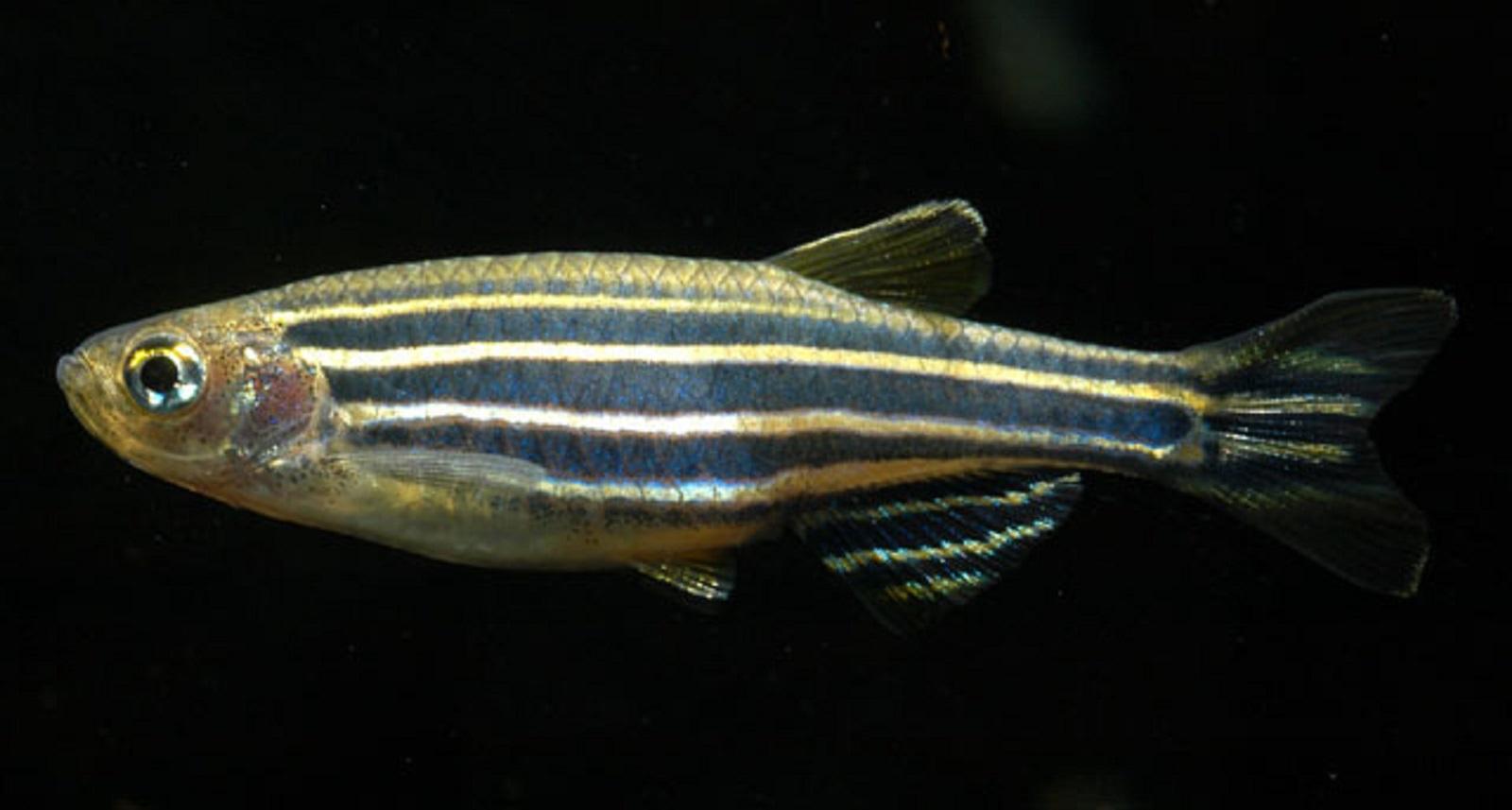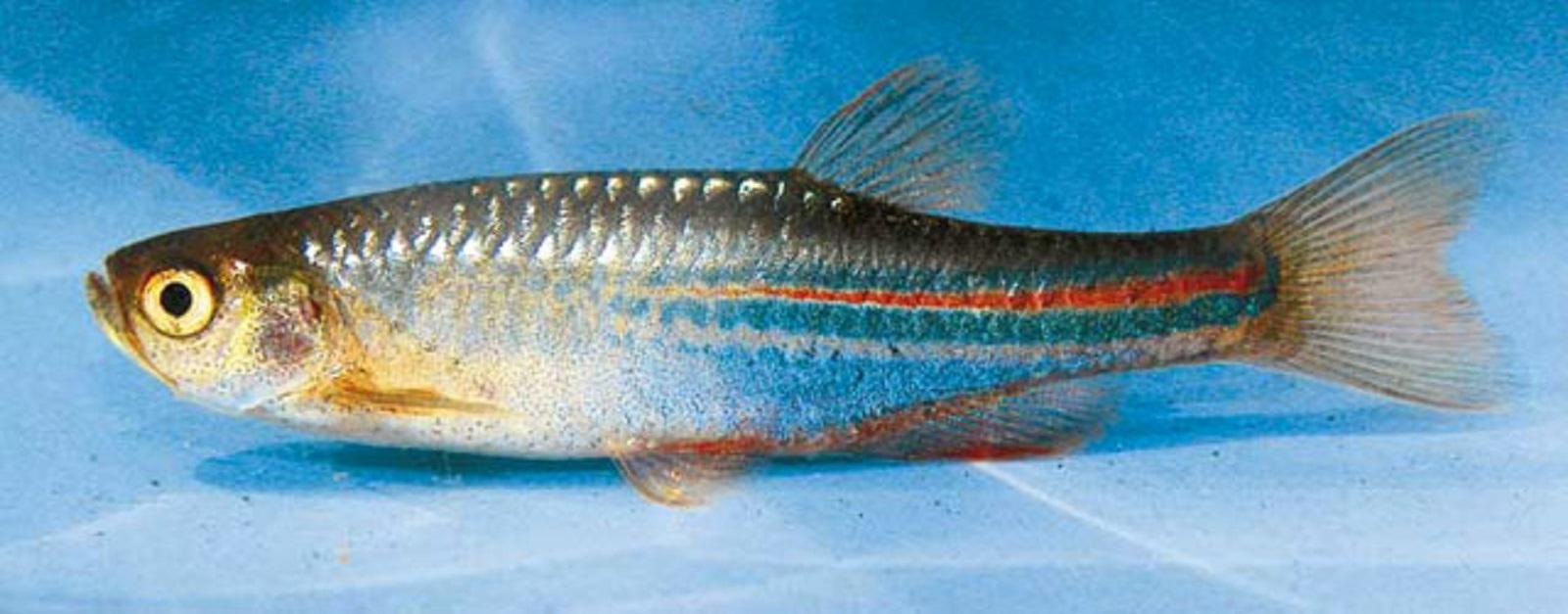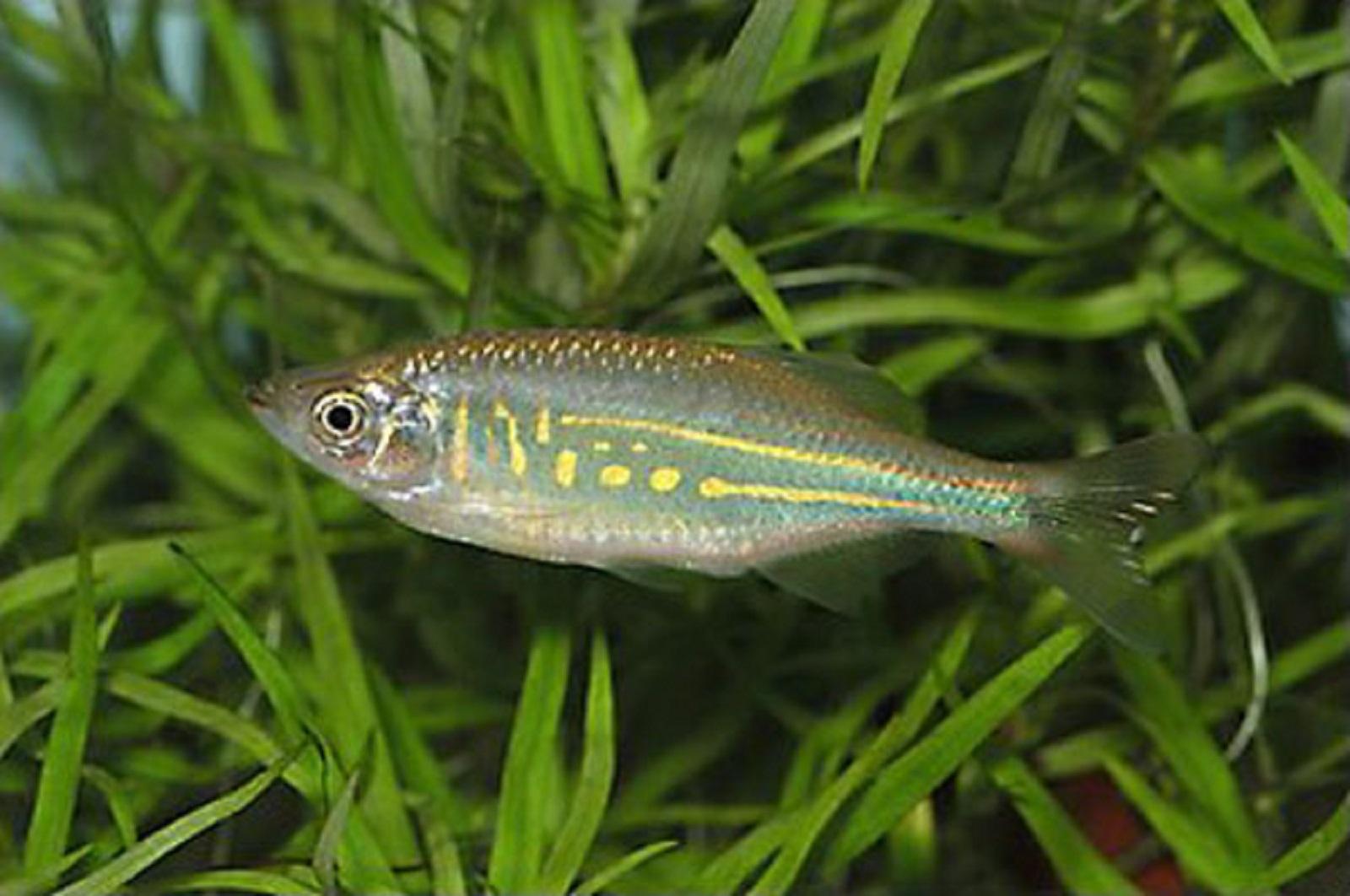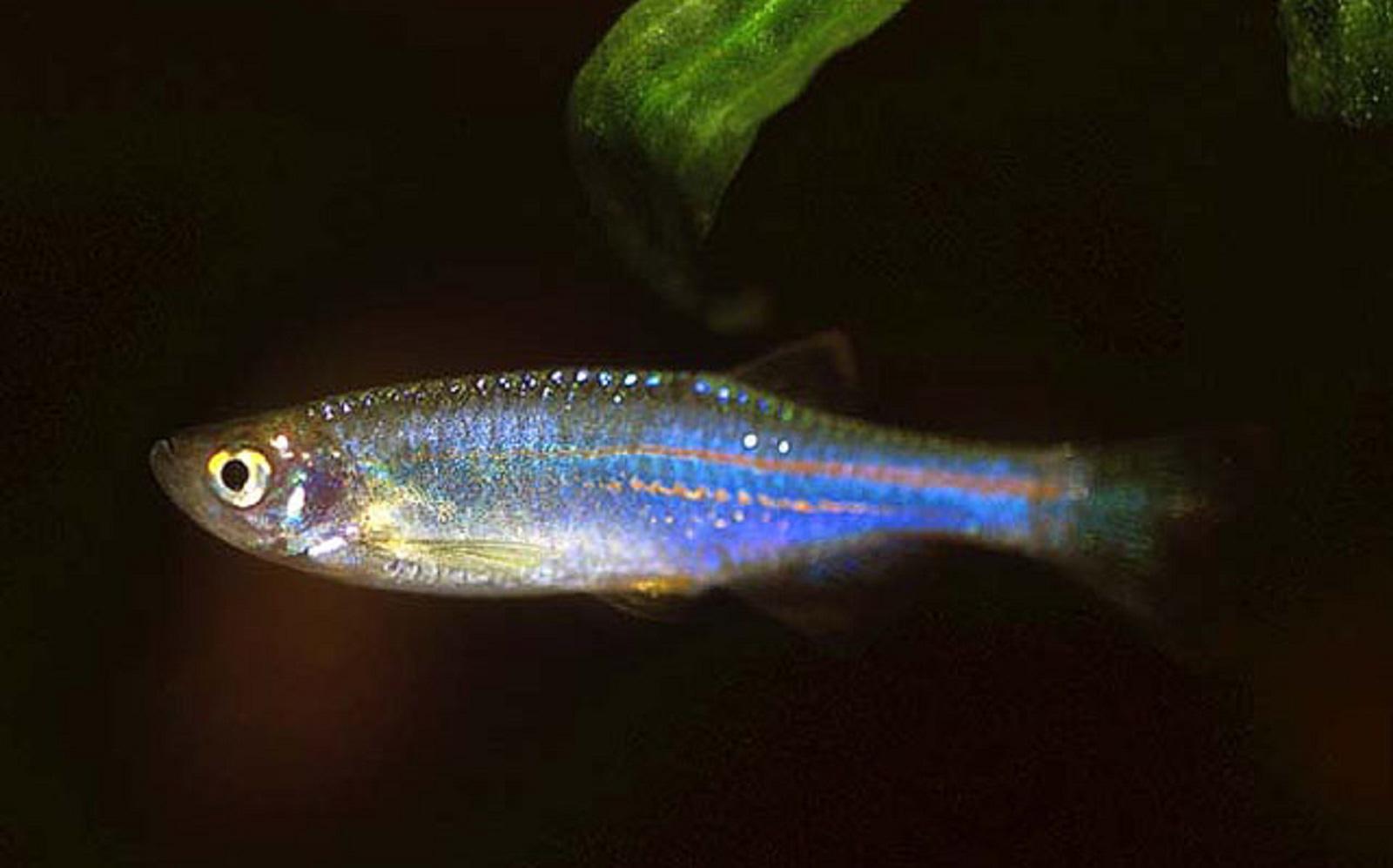Egg Scatter laying non-adhesive eggs
Egg Scatter laying non-adhesive eggs
These species simply lay non-adhesive eggs that fall to the substrate, into plants, or float to the surface. The brood fish do not care about that and may even eat their eggs. They may spawn in groups or pairs. These species release large number of small eggs and the fry hatch out rapidly. The larger ones are grouped under the genus Danio and smaller ones under Brachidanio.
Commercially important species
Among Egg scatters, the Zebra danio, Pearl danio and Giant danio are commercially important species.
Zebra danio

- Name : Zebra danio, Danio rerio (Hamilton, 1822)
- Family: Cyprinidae
- Size; 4.5 cm
- pH: 6.0 - 8.0
- Temperature: 18°C - 24°C
- Food habit: Carnivorous
- Distribution: Pakistan, India, Bangladesh, Nepal, and Myanmar
Description: A slender fish with two pairs of barbels. The fish has colours of silver and bright blue, horizontal stripes on the sides of the body, all extending onto the end of the caudal fin. There is no lateral line. Rostral barbels extend to anterior margin of orbit, and maxillary barbels end at about the middle of opercle.
Pearl danio

- Name : Pearl danio, Danio albolineatus (Blyth, 1860)
- Family: Cyprinidae
- Size; up to 6.5 cm
- pH: 6.0 - 8.0
- Temperature: 20°C - 25°C
- Food habit: Omnivorous
- Distribution: Asia: Myanmar to Laos and the island of Sumatra, Indonesia
Description: Matured species are grey-greenish with iridescences. The body colouration varies on the light condition and side lighting. Spawning fish takes on an attractive pearly blue-violet lustre. A thin gold line runs along the rear of the body. Normally fins are translucent green, may also have red or yellow shading at their bases. Female has a deeper body.
Giant danio

- Name : Giant danio, Devario aequipinnatus (McClelland, 1839)
- Family: Cyprinidae
- Size: 10 - 12 cm
- pH: 6.0 - 8.0
- Temperature: 22°C - 24°C
- Food habit: Omnivorous
- Distribution: India and Nepal to Indochina
Description: The giant danio body is pale-blue with two to three horizontal yellow line from the gill cover to caudal peduncle. Female has body of greater depth, and the yellow line turns up at the beginning of the caudal fin.
Blue danio

- Name : Blue danio, Danio kerri (Smith, 1931)
- Family: Cyprinidae
- Size: 10 - 12 cm
- pH: 6.5 - 7.0
- Temperature: 23°C - 25°C
- Food habit: Omnivorous
- Distribution: Malay Peninsula
Description: Normally fish has grey-blue with iridescences. Two thin gold line run back from dark cemented, gold-rimmed eye to end of caudal peduncle. Fins are translucent green, and some may show yellowish shading. Male has more intense colour than the female.
Breeding and seed production of zebra danio
The male and female brood fishes are reared in separate tanks. The male danio is bit smaller and slender than the female. Both sexes have two pairs of barbels and stripes, but female is larger and full bodied than male when is filled with eggs. The brood fishes are fed with live feed before breeding. The tank for reproduction is to be made ready with shallow water about 15cm deep. Furnish the tank with spawning grid at the bottom. Add the gravel which assists to protect the eggs from the adult fishes, which eat their eggs.
Typically, the breeding ratio of 2:1 or 3:1 (male: female) is suggested. The female is introduced into the tank of reproduction one day earlier than male fishes. It scatters about 300 – 500 eggs across the bottom and on plants. It 's hard to identify whether fish has laid eggs or not due to small egg size, and the eggs may also be hidden behind the pebbles.
After spawning, remove the brood fishes, as they consume the young too. The fry will hatch in two to three days. From 4th day onwards, it feeds on infusoria. Subsequently, the rotifer, Artemia, and formulated feed are provided.
References
- Ahilan, B., Felix, N. and Santhanam, R. 2008. Textbook of Aquariculture. Daya Publishing House, New Delhi.
- Menon, A.G.K., 1999. Check list - fresh water fishes of India. Rec. Zool. Surv. India, Misc. Publ., Occas. Pap. No. 175, 366 p.
- Ornamental fish production and management, online e-learning on Agricultural Education
- Riehl, R. and H.A. Baensch, 1991. Aquarien Atlas. Band. 1. Melle: Mergus, Verlag für Natur-und Heimtierkunde, Germany. 992 p.
- Swain SK., Sarangi, N. and Ayyappan S. 2010. Ornamental fish farming. Indian Council of Agricultural Research, New Delhi.
Last Modified : 7/2/2023
This topic provides information related to culture...
This topic provides information about brood stock ...
The topic provides information about the grow out...
This topic provides details about species profile,...
